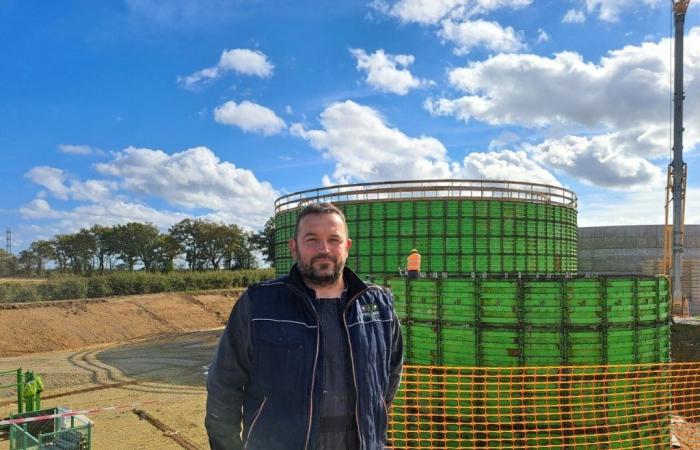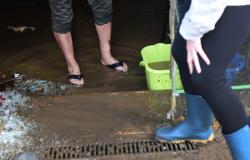
Par
Marion Valley
Published on
Oct. 20 2024 at 1:36 p.m
See my news
Follow Le Courrier du Pays de Retz
We see it going up, route de La Boutinière, in Sainte-Pazanne. These three large tanks will make up the future Gaec (1) des Cariolets methanizer, specialized in the breeding of dairy cows. The 4e of the country of Retz and the 14e of Loire-Atlantique which will inject its production into the city gas distribution network.
Cost of investment: 4.8 million euros. Suffice to say that you have to be sure of your move. And Sylvain Guilbaud, one of the Gaec partners, is.
At the beginning, we signed up for the XXL methanizer process in Corcoué sur Logne so as not to miss an opportunity. Throughout the meetings, I heard the arguments of the opponents. I dug into the subject and told myself that this was not the right solution for us
“We needed a methanizer adapted to our production, smaller, more profitable, more virtuous and that we managed ourselves! »
By the numbers
The Gaec des Cariolets is made up of four partners, two employees and an apprentice; 200 dairy cows; 1.9 million liters of milk per year; 340 ha dedicated to meadows and cereals (wheat, corn, sunflower, rapeseed).
An SAS was created to manage the future methanizer which will produce 75 Normo m3 per year.
To build this equipment, a 1.5 ha plot was artificialized.
It required 4.8 million euros of investment: 4.2 million euros of bank loan, 300,000 € from Ademe, 300,000 € of personal investment (including 100,000 € from a participatory kitty online on the Miimosa website).
GRDF has started work to lay 11 km of gas pipes in the area of the Pornic agglomeration to transport the gas emanating from the methanizer.
In the network during June 2025
This methanization unit, efficient in mid-June, will produce 75 Normo m3 per year, injected, during June 2025, into the city gas network of Sainte-Pazanne, Saint-Hilaire, Chaumes en Retz and Pornic. According to GRDF, this local production will cover the equivalent of the annual gas consumption of 1,200 recent homes, which will be added to the 35,000 homes already covered in the department by these methanization units.
A reduction in chemical fertilizers
Not only will biomethane be released, but 10,000 tonnes per year of agricultural waste will be processed for its production: “We are limited to 30 tonnes per day (2). » The idea is therefore not to produce more to make more profit. “It’s Engie who buys the gas from us. We have a 15-year contract at a fixed price. It will be profitable from the first year. » Because the “waste” from the methanizer will be used as fertilizer, resulting in a reduction in chemical fertilizers.
When we make cereals, we must add nitrogen. Today, it is bought in Eastern countries at fluctuating prices. »
Tomorrow, this digestate, equivalent to a complete liquid fertilizer since it contains potash, phosphorus and ammoniacal nitrogen, will be created on site.
Improvements, but no expansion
The agricultural methanizer, Sylvain Guilbaud only sees advantages: the simplification of the management and valorization of livestock effluent; the valorization of plant cover; economic diversification and the sustainability of agricultural operations; the production of local, non-relocatable renewable energy…
“We listened to our neighbors”
Regarding olfactory nuisances, digestate generates fewer odors than the spreading of manure and slurry, according to Ademe (Ecological Transition Agency) which is helping to finance the project. “We also listened to our neighbors and changed the location of the methanizer, away from homes. »
The idea is not to enlarge this methanization unit, but to complete and improve it: “A methanizer uses a lot of electricity. We plan to equip the building with photovoltaic panels and recover the CO2”, a co-product of methane production, “which can be resold”.
(1) Joint farming group.
(2) a ration composed of 60% livestock effluent, 25% Cives (intermediate energy crops) and 15% main crops
Follow all the news from your favorite cities and media by subscribing to Mon Actu.





